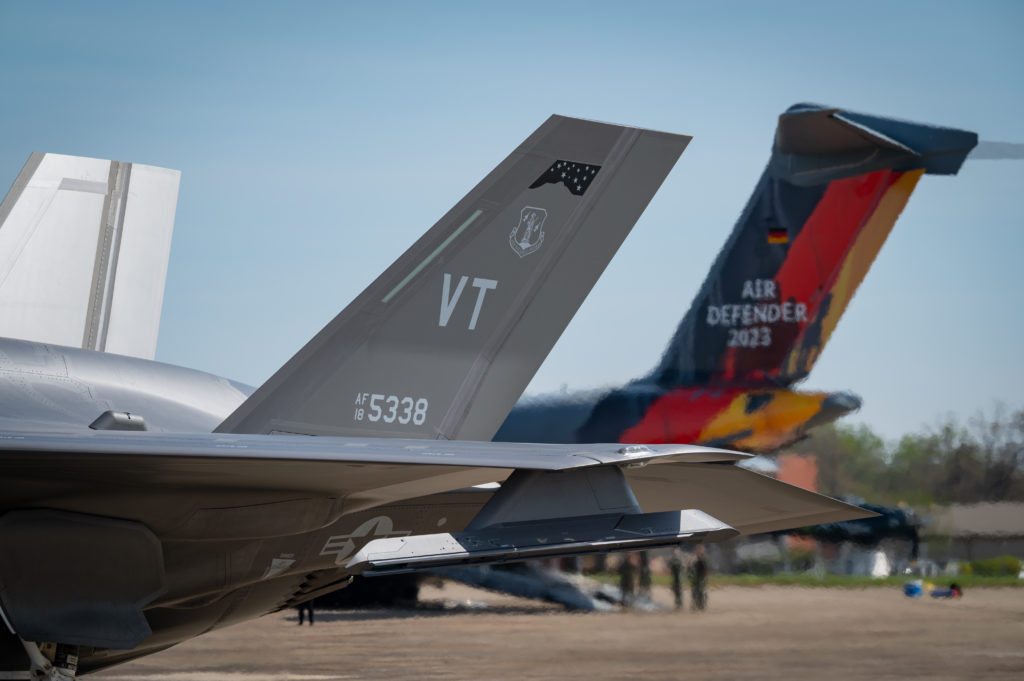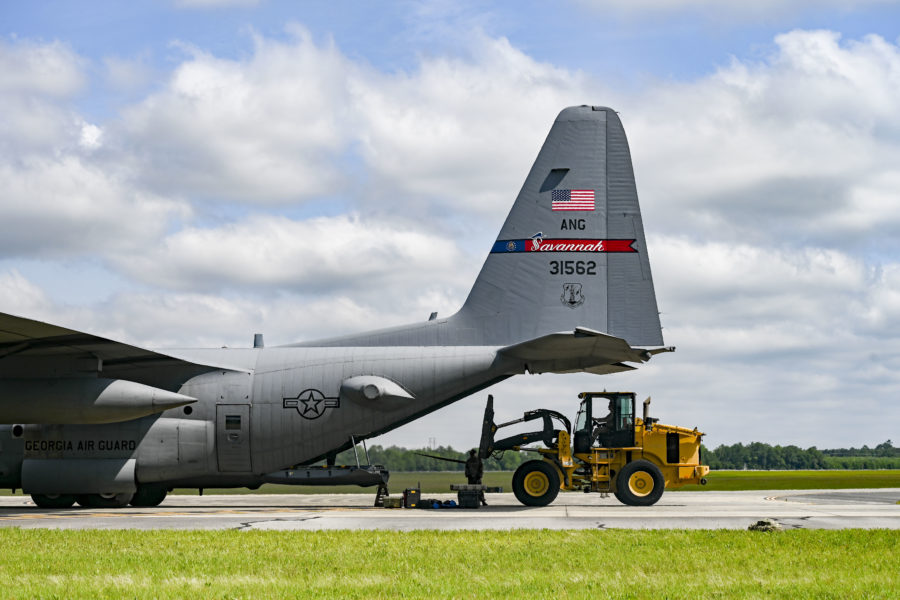C-130 transport aircraft from Air National Guard units in Arkansas, Georgia, Illinois, Nevada, New Mexico, Minnesota and Wyoming began arriving at Wunstorf Air Base, Germany, this week in preparation for Air Defender 23—a massive exercise in which 220 aircraft and 10,000 personnel from 25 countries will practice large-scale air warfare and hone new tactics.
The C-130s are the first of about 100 Air National Guard aircraft that will head to Europe to participate in the exercise. All told, Guard units from 35 states will fly F-35s, F-16s, F-15s, A-10s, KC-135s, KC-46s, C-130s, and C-17s. Active-Duty F-16s from the 52nd Fighter Wing at Spangdahlem Air Base, Germany, will also participate.
The exercise, which the German military described as “the largest air force deployment exercise in NATO’s history,” and has been in the making since 2018 and will last from June 12 to 23. The German Air Force will test its ability to command and control and provide logistics support to an international armada of aircraft.
“We have to be much more capable of defending the lines and it’s not just about talking or showing slides,” Chief of the German Air Force Lt. Gen. Ingo Gerhartz said about the exercise during a visit to Joint Base Andrews, Md., in April. “We have to prove it, we have to demonstrate it. How do you inform Russia? Well, we won’t write them a letter. I think they get the message when we deploy.”
The exercise will take place mainly in three areas over Germany, though there will also be forward operating locations in the Czech Republic, Estonia, and Latvia. Like many air warfare exercises, mock enemy ‘Red’ aircraft will take to the skies and fight with friendly ‘Blue’ aircraft.
“Blue will be killing and Red will be killing,” Air National Guard director Lt. Gen. Michael A. Loh told Air & Space Forces Magazine in April. “Everyone will see a little bit of Red.”

Though Germany will lead the exercise, U.S. Airmen hope to practice new operating concepts like Agile Combat Employment, where small teams of Airmen and planes disperse to remote or austere locations in an effort to complicate an enemy’s targeting process. Operating from smaller locations forces Airmen to work with a greater autonomy—a far cry from the top-down air wars fought from sprawling air bases in the Middle East during the Global War on Terror.
“It gets us out of what I would call the legacy mindset of CENTCOM,” Loh said in April. “It doesn’t matter what it is, A-10, KC-135, are they going to be able to go ‘OK, I’ve lost our comms, everybody.’ I know what the initial plan was for today. Can I set myself up and do it as an aircraft commander, with a full crew, and take off and go make the next mission?”
As NATO forces begin a simulated air war, Russia and Ukraine are locked in an actual conflict on the same continent. Russia’s 2022 invasion of Ukraine has sparked increased investment and efforts by many European militaries to strengthen their air defenses.
“We have to take responsibility to stand up and say ‘OK, we are ready to defend the alliance,’” Gerhartz said in April.
Retired USAF Gen. Jeffrey L. Harrigian, who led U.S. Air Forces in Europe and NATO Allied Air Command from 2019 to 2022, told Air & Space Forces Magazine in April that NATO’s efforts to modernize member air forces could make a big impact.
“If we mass legitimate capabilities, it’s going to deter Russia, and they’re not going to want any part of what we could potentially do to them,” he said.

